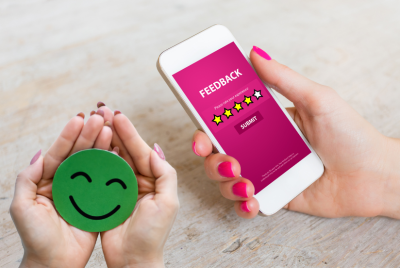Mastering Sales Funnels: Tips for Increasing Conversions and Revenue
Introduction:
I’d like to share some valuable insights on how to master sales funnels to boost your conversions and revenue. Sales funnels are an essential component of any successful business, guiding potential customers through a well-defined journey from initial awareness to making a purchase.
In this article, we will explore the concept of sales funnels, understand their importance, and uncover practical tips to create effective and optimized funnels.
Understanding Sales Funnels
What is a Sales Funnel?
A sales funnel represents the step-by-step process a potential customer goes through before making a purchase. It’s called a funnel because, at each stage, the number of potential customers narrows down until only the most interested and qualified ones convert into paying customers. A well-designed sales funnel provides a structured path, ensuring that leads are properly nurtured, resulting in higher conversion rates and revenue.
The Stages of a Sales Funnel
A typical sales funnel consists of several stages: awareness, interest, consideration, and action. In the awareness stage, prospects become aware of your brand or product. As they develop interest, they move to the second stage, where they consider the benefits and value you offer. Finally, in the action stage, they make a purchasing decision. Understanding these stages is crucial for optimizing your sales funnel and driving conversions.
Importance of Sales Funnels
Streamlined Customer Journey
A well-crafted sales funnel provides a streamlined customer journey, guiding prospects smoothly through each stage. By addressing their needs and pain points at every step, you can create a seamless experience that fosters trust and builds strong relationships. This not only enhances customer satisfaction but also increases the likelihood of repeat business and referrals.
Improved Conversion Rates
Sales funnels play a pivotal role in improving conversion rates. By segmenting your audience and tailoring your messaging based on their specific needs and interests, you can deliver targeted content that resonates with them. This personalization increases the chances of converting leads into paying customers, maximizing your overall conversion rate.
Increased Revenue
An effective sales funnel has a direct impact on your revenue. By optimizing each stage of the funnel and removing any bottlenecks, you can ensure a higher percentage of leads successfully progress through the funnel. This translates into a significant boost in revenue, as more qualified leads convert into paying customers and potentially become loyal advocates for your brand.
Creating an Effective Sales Funnel
Defining Your Target Audience
To create an effective sales funnel, you must clearly define your target audience. Understanding their demographics, preferences, and pain points allows you to tailor your messaging to resonate with them. Conduct market research, analyze customer data, and create buyer personas to ensure you’re targeting the right audience with your funnel.
Mapping the Customer Journey
Mapping the customer journey involves identifying the touchpoints where prospects interact with your brand. This includes their initial discovery, engagement with your content, and eventual purchase. By understanding this journey, you can create appropriate content and experiences that align with their needs and expectations at each stage.
Capturing Leads
One of the fundamental goals of a sales funnel is to capture leads. Offer valuable content, such as e-books, webinars, or free trials, in exchange for prospects’ contact information. This enables you to nurture leads and guide them through the funnel. Use lead magnets and opt-in forms strategically to encourage conversions.
Nurturing Leads
Nurturing leads is crucial for building relationships and increasing the likelihood of conversions. Utilize email marketing, personalized follow-ups, and targeted content to keep leads engaged and provide them with relevant information. Tailor your communication based on their interests and actions, ensuring a personalized experience.
Converting Leads into Customers
To convert leads into customers, focus on creating persuasive landing pages, compelling product descriptions, and enticing offers. Use social proof, testimonials, and case studies to instill confidence and address any objections. Implement effective call-to-action buttons and optimize your checkout process to facilitate smooth conversions.
Retaining and Upselling Customers
An effective sales funnel doesn’t end with the initial purchase. It’s essential to prioritize customer retention and upselling. Implement post-purchase email sequences, loyalty programs, and personalized recommendations to keep customers engaged and encourage repeat purchases. Continuously provide value and exceed their expectations to build long-term customer loyalty.
Optimizing Sales Funnel for Conversions
Analyzing Data and Metrics
Regularly analyze data and metrics to gain insights into the performance of your sales funnel. Identify key performance indicators (KPIs) such as conversion rates, bounce rates, and average order value. Use analytics tools to track customer behavior, understand their pain points, and optimize your funnel accordingly.
Identifying Bottlenecks
Identifying bottlenecks in your sales funnel is crucial for removing obstacles and maximizing conversions. Analyze the drop-off points and areas where leads are getting stuck. Optimize those stages by addressing any issues, simplifying processes, and providing additional support or incentives to move prospects forward.
A/B Testing
A/B testing allows you to experiment with different variations of your funnel elements to determine what works best. Test different headlines, call-to-action buttons, landing page designs, and email subject lines. Analyze the results and make data-driven decisions to optimize your funnel for higher conversions.
Personalization and Segmentation
Personalization and segmentation are key strategies for optimizing your sales funnel. Utilize customer data to personalize your messaging, recommendations, and offers. Segment your audience based on demographics, behavior, or purchase history to deliver targeted content that resonates with each segment’s specific needs and preferences.
Effective Call-to-Actions
Effective call-to-action (CTA) buttons are essential for guiding leads through your sales funnel. Use persuasive language, clear instructions, and a sense of urgency to encourage action. Place CTAs strategically on your website, landing pages, and emails to maximize their visibility and impact.
Leveraging Automation in Sales Funnels
Benefits of Automation
Automation can significantly enhance the efficiency and effectiveness of your sales funnel. It allows you to deliver personalized and timely content, automate lead nurturing sequences, and track customer interactions. By automating repetitive tasks, you can focus more on building relationships and driving conversions.
Implementing Marketing Automation
Implement marketing automation tools that integrate with your customer relationship management (CRM) system. This enables seamless data syncing and allows you to create automated workflows for lead nurturing, email marketing, and customer segmentation. Automate repetitive tasks to save time and provide a consistent experience throughout the funnel.
Email Automation
Email automation is a powerful tool for nurturing leads and guiding them through the sales funnel. Set up automated email sequences triggered by specific actions or time intervals. Deliver targeted content, product recommendations, and exclusive offers based on the lead’s behavior and stage in the funnel.
CRM Integration
Integrate your sales funnel with a CRM system to centralize customer data and streamline your sales processes. A CRM enables you to track interactions, monitor lead progress, and facilitate effective communication with prospects and customers. Leverage the CRM’s features to segment your audience, personalize interactions, and measure the success of your funnel.
Retargeting and Remarketing
Retargeting and remarketing tactics allow you to re-engage leads who have shown interest but haven’t converted. Implement pixel tracking and ad campaigns to display relevant ads to these prospects across different platforms. Tailor the messaging to address their specific needs or offer incentives to encourage them to return and complete their purchase.
Integrating Sales Funnels with Marketing Strategies
Content Marketing
Integrate your sales funnel with a robust content marketing strategy. Create high-quality, informative content that aligns with each stage of the funnel. Use blog posts, videos, infographics, and case studies to educate and engage your audience. Promote your content through various channels to drive traffic and attract qualified leads.
Social Media Marketing
Leverage social media platforms to amplify your sales funnel efforts. Engage with your target audience, share valuable content, and provide prompt customer support. Use social media advertising to target specific demographics and retarget prospects who have interacted with your brand. Encourage social sharing to expand your reach and generate awareness.
Paid Advertising
Paid advertising can complement your sales funnel by driving targeted traffic to your website or landing pages. Utilize platforms like Google Ads, Facebook Ads, or LinkedIn Ads to reach your ideal audience. Craft compelling ad copy and select relevant keywords to ensure your ads attract the right prospects.
Influencer Marketing
Influencer marketing can be a powerful strategy to promote your sales funnel. Collaborate with influencers in your industry who have a strong following and align with your brand values. Have them endorse your products or share their positive experiences with your funnel. This can significantly increase brand awareness and credibility.
Tracking and Measuring Success
Key Performance Indicators (KPIs)
Establish key performance indicators (KPIs) to measure the success of your sales funnel. Track metrics such as conversion rates, customer acquisition cost (CAC), customer lifetime value (CLV), and return on ad spend (ROAS). Regularly monitor these KPIs to identify areas for improvement and make data-driven decisions.
Analyzing Return on Investment (ROI)
Analyze the return on investment (ROI) of your sales funnel by comparing the revenue generated against the costs incurred in its implementation. Consider both direct revenue from conversions and indirect benefits such as customer retention and brand loyalty. Continuously optimize your funnel to maximize ROI and ensure long-term profitability.
Continuous Improvement
A successful sales funnel is never static. Continuously monitor its performance, analyze customer feedback, and identify areas for improvement. Stay updated on industry trends, consumer preferences, and emerging technologies to adapt and optimize your funnel accordingly. Embrace a mindset of continuous improvement to stay ahead of the competition.
Conclusion
Mastering sales funnels is a vital component of driving conversions and revenue. By understanding the stages of a funnel, optimizing each step, and leveraging automation and effective marketing strategies, you can create a well-oiled system that consistently generates results. Remember to analyze data, personalize interactions, and prioritize customer satisfaction. Continuously refine your funnel based on insights and market trends to maximize its effectiveness and achieve long-term success.
FAQs
1. How long does it take to see results from a sales funnel?
The time it takes to see results from a sales funnel can vary depending on several factors, including your industry, target audience, and marketing efforts. In general, it’s important to give your funnel enough time to gather data and optimize based on insights. While some businesses may see results within a few weeks, others might require several months to achieve significant improvements.
2. How can I identify bottlenecks in my sales funnel?
To identify bottlenecks in your sales funnel, closely monitor the performance of each stage. Look for significant drop-off points where leads are not progressing as expected. Analyze data and metrics to identify any patterns or issues. Conduct user testing and gather feedback from customers to understand their pain points and challenges during the funnel process.
3. Is it necessary to use automation in sales funnels?
While automation is not a requirement, it can greatly enhance the efficiency and effectiveness of your sales funnel. Automation allows for personalized communication, timely follow-ups, and seamless lead nurturing. It saves time, ensures consistency, and enables you to focus on building relationships. However, the extent of automation depends on your resources, budget, and specific business needs.
4. How often should I update my sales funnel?
Regularly updating and optimizing your sales funnel is crucial for its success. Market trends, consumer behavior, and technology evolve rapidly, so it’s important to stay ahead. Aim to review and analyze your funnel performance at least quarterly, making adjustments based on data-driven insights. Be proactive in experimenting with new strategies and continually refining your funnel to adapt to changing market dynamics.
5. What role does content marketing play in sales funnels?
Content marketing plays a significant role in sales funnels as it provides valuable information and engages your audience at different stages. Well-crafted content educates prospects, builds trust, and addresses their pain points. It can attract new leads, nurture them throughout the funnel, and influence their purchasing decisions. Incorporate content marketing strategies that align with your funnel to maximize its impact.




